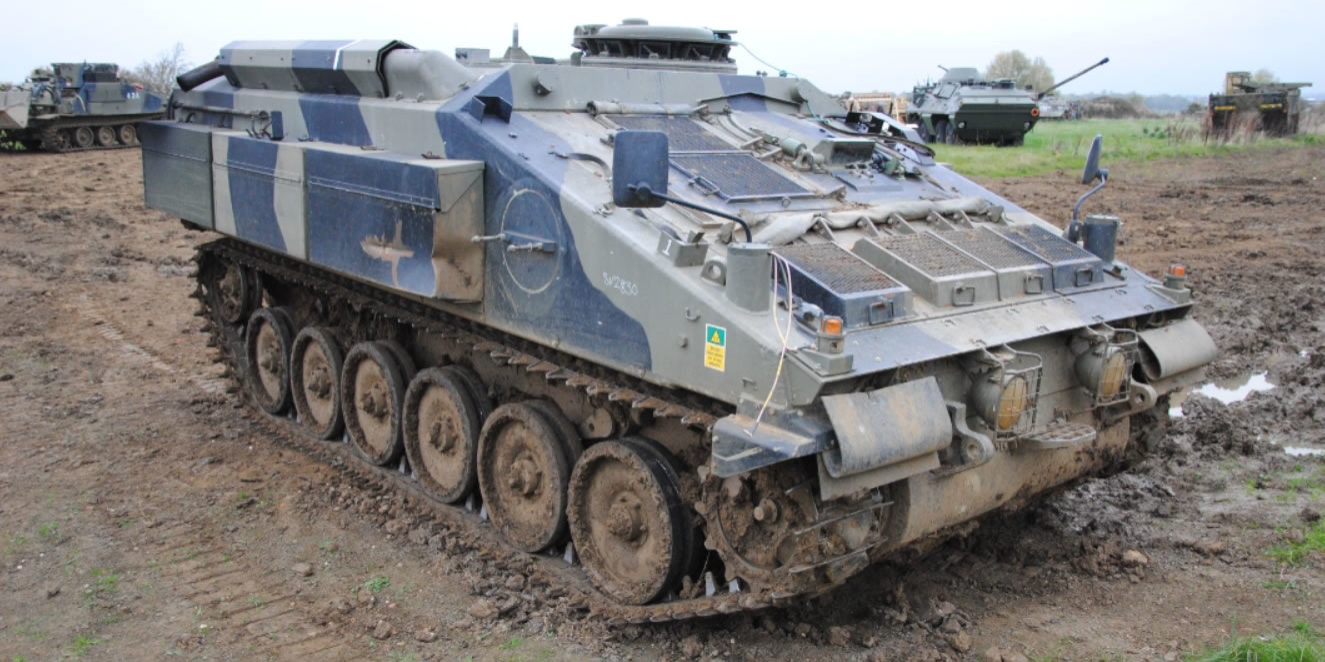Quick Facts
| Variants | N/A |
| Role and Mobility | Short-Range Air Defense; Land-Based |
| Interceptors and Range |
Starstreak missiles Effective Range: 1500 km Maximum Range: 5500 km Speed: Mach 3.5 |
| Sensors |
Mounted Air Defense Alerting Device Laser Guidance Beam Thales Page Radar |
| Targets | Attack Helicopters and Low-Flying Aircraft |
| Status/Exports | Operational; United Kingdom and Oman |
| Designer/Producer | Thales Group |
Overview
The Stormer High Velocity Missile (HVM) system is a vehicle-based variant of the Thales Group’s Starstreak missile. The Stormer variant places launchers with Starstreak missiles atop an Alvis Stormer vehicle.[i] The Starstreak involves a two-stage rocket, the second stage of which propels three individual darts to their desired target. The employment of three projectiles — “hittiles” — as opposed to one, creates a greater level of accuracy and lethality. The system is effectively akin to the spread of a shotgun, except that each individual projectile homes in on its target.[ii] Starstreak is particularly accurate because of its ability to evade countermeasures, and the fact that it uses laser beam riding to reach its target. This works by having the projectile travel along a laser that is pointed at the target, which is controlled by an operator.
Strategic Implications
The Stormer HVM is most strategically valuable because of the Starstreak missiles that it employs. The Starstreak can be launched from several other platforms. It can be launched from land, sea, or air platforms and from automatic or manual launchers.[iii] Additionally, it can be placed in a portable system and fired from the shoulder by an individual warfighter. This means that the system can be used in a variety of threat environments and can be integrated into an overarching air defense strategy. The second strategic benefit of the Starstreak is that it is extremely accurate. It is immune to all known countermeasures, even electronic countermeasures (ECMs); once the Starstreak locks on to a target, it is almost certain that the target will be hit.[iv] On another note, the Starstreak has been reported to be an effective weapon against land-based targets, meaning that it would make for a powerful and portable anti-tank weapon.[v] This would be especially useful in situations of guerrilla warfare, especially because the Starstreak is not very difficult or skill-intensive to operate.
Timeline
July 2004: A follow-on contract with deliveries starting in 2007 was awarded.[vi]
September 2000: The Lightweight Multiple Launcher (LML) and shoulder-launched versions were put into service.
December 1999: The original order of 135 systems has been completed and a five-year production contract was awarded to Shorts.
1997: The first of 135 Stormer HVM systems entered service with the British Army.[vii]
Recent News
References
[i] http://www.military-today.com/missiles/stormer_hvm.htm
[ii] https://www.thalesgroup.com/sites/default/files/asset/document/STARStreak_05_12.pdf
[iii] Ibid.
[iv] https://www.thalesgroup.com/sites/default/files/asset/document/STARStreak_05_12.pdf
[v] http://www.military-today.com/missiles/stormer_hvm.htm
[vi]http://21bty.org.uk/starstreak-hvm/
[vii] http://www.military-today.com/missiles/stormer_hvm.htm

